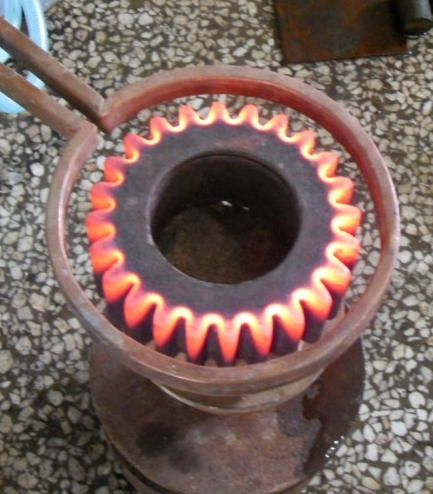- 26
- Oct
Principles and advantages of induction heating surface hardening
Principles and advantages of induction heating surface hardening
Some parts are subjected to alternating loads and impact loads such as torsion and bending during the workpiece, and its surface layer bears higher stress than the core. In the occasion of friction, the surface layer is continuously worn. Therefore, the surface layer of some parts is required to have high strength, high hardness, high wear resistance and high fatigue limit. Only surface strengthening can meet the above requirements. Because surface quenching has the advantages of small deformation and high productivity, it is widely used in production.
According to different heating methods, surface quenching mainly includes induction heating surface quenching, flame heating surface quenching, and electric contact heating surface quenching.
Induction heating surface hardening: Induction heating is the use of electromagnetic induction to generate eddy currents in the workpiece to heat the workpiece. Compared with ordinary quenching, induction heating surface quenching has the following advantages:
1. The heat source is on the surface of the workpiece, the heating speed is fast, and the thermal efficiency is high
2. Because the workpiece is not heated as a whole, the deformation is small
3. The heating time of the workpiece is short, and the amount of surface oxidation and decarburization is small
4. The surface hardness of the workpiece is high, the notch sensitivity is small, and the impact toughness, fatigue strength and wear resistance are greatly improved. Conducive to exert the potential of materials, save material consumption, and increase the service life of parts
5. The equipment is compact, easy to use and good working conditions
6. Facilitate mechanization and automation
7. Not only used in surface quenching, but also in penetration heating and chemical heat treatment.

